If you’ve ridden bicycles for longer than headset cable routing has been around, you’ve likely pulled the lever of a Tektro brake. The third largest bicycle brake manufacturer, right behind — you guessed it — Shimano and SRAM, Tektro is a Taiwanese-based company. Tektro is also home to TRP (Tektro Racing Products), Tektro’s premium performance MTB brand launched in 2016 to propel (and occasionally slow) elite athletes such as Aaron Gwin and the Specialized Enduro Team.
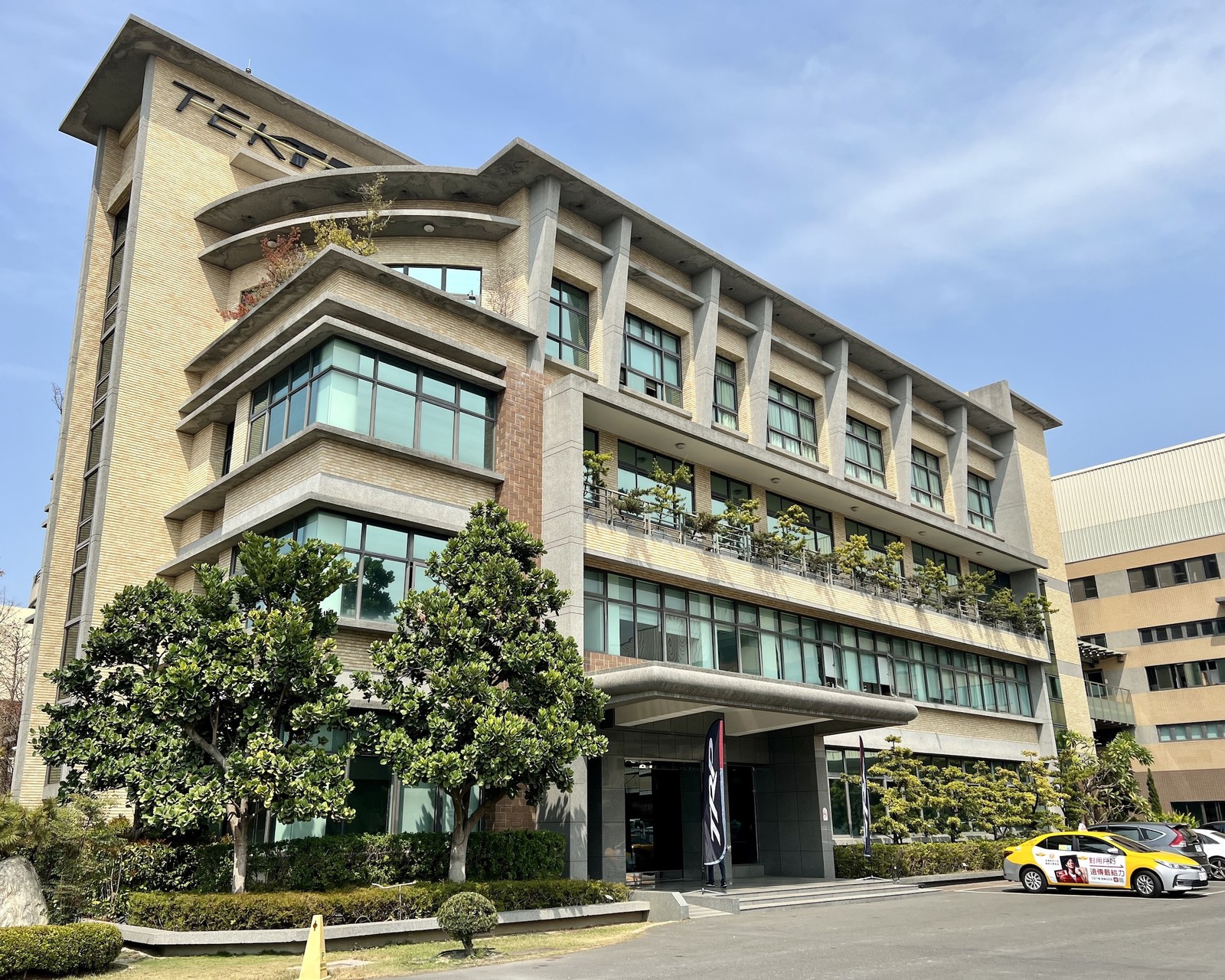
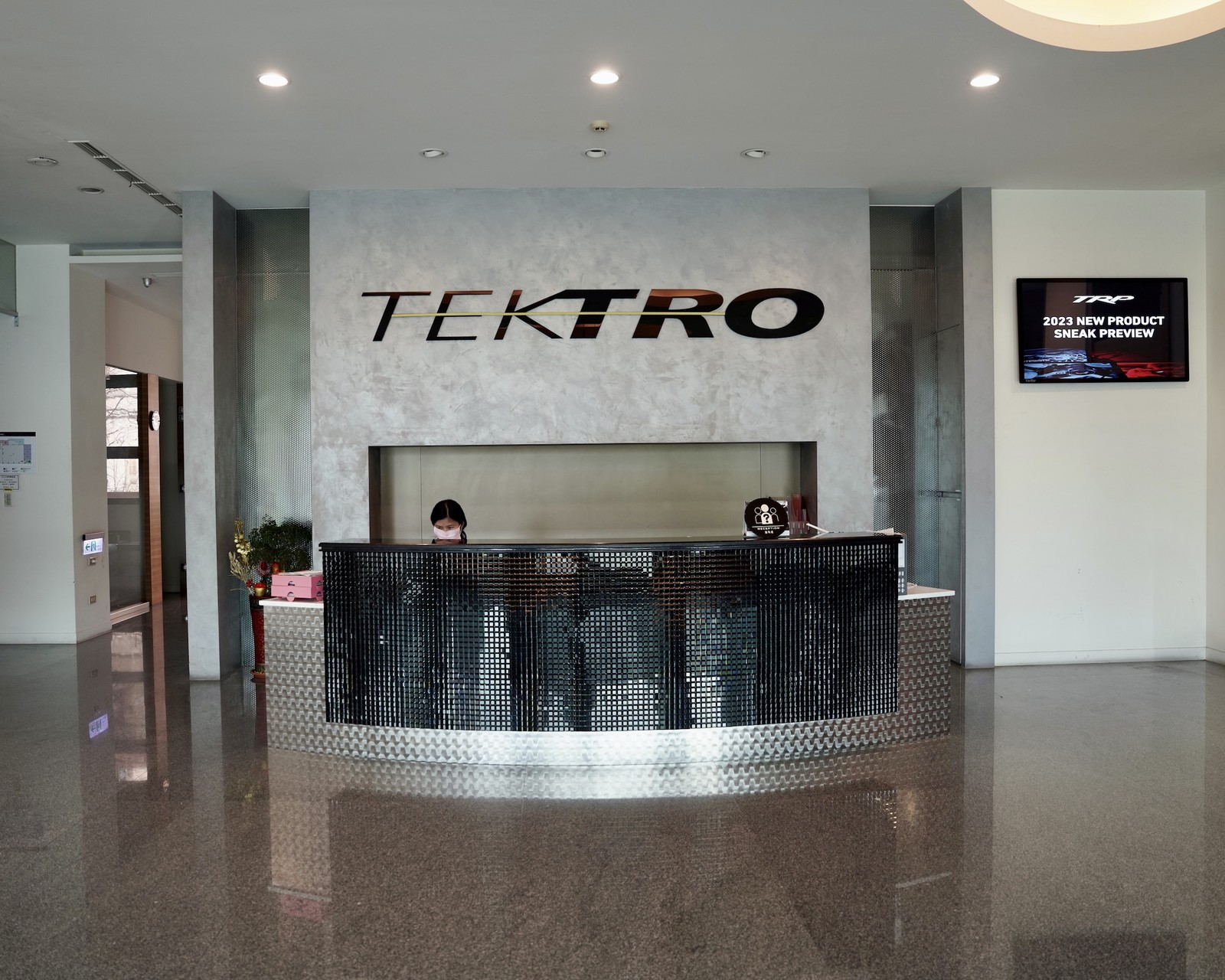
In March, Tektro/TRP invited us to their Taichung headquarters and factory for a behind-the-scenes look at how bicycle brakes and drivetrains are manufactured. Coinciding with the Taipei Cycle Show, we also got a sneak peek and quick test ride of their latest product introduction, the EVO drivetrain.

Tektro’s history is full of technological advances, evident upon entering the lobby of their headquarters. The family-owned business was founded in 1986. The three founders are still involved, though they are now in the process of passing the factory torches to their children, who are already heading up numerous departments across the business.

The Taiwanese factory recently underwent a massive expansion, doubling the production capacity to an average of 20,000 brakes per day with the ability to produce up to 30,000. That’s a lot of stopping power in one place.
Globally, Tektro produces 13 million brakes per year. Tektro handles most of the production at their three factories (two are in China), even down to the brake pads, producing millions each month! Select specialized processes and components such as rotors, hoses, and screws are outsourced to vendors. Carbon production for the carbon EVO cranks is handled in-house.
The design and development teams for Tektro and TRP are also based here, except for the EVO drivetrain team. Tektro opened a new R&D engineering office nearby in downtown Taichung City to focus on bringing in the best engineering talent to solve the intricacies of drivetrain design and componentry.

TRP athletes Cody Kelley and Seth Sherlock were in attendance to assist the team with the factory tour. It turns out these two racers are skilled at more than just finding the fastest race lines. Closely involved in the testing and development of TRP products, including the new drivetrain, both athletes were impressively knowledgeable about the production processes, pointing out the most exciting details on the production lines and answering our questions as we toured the factory.
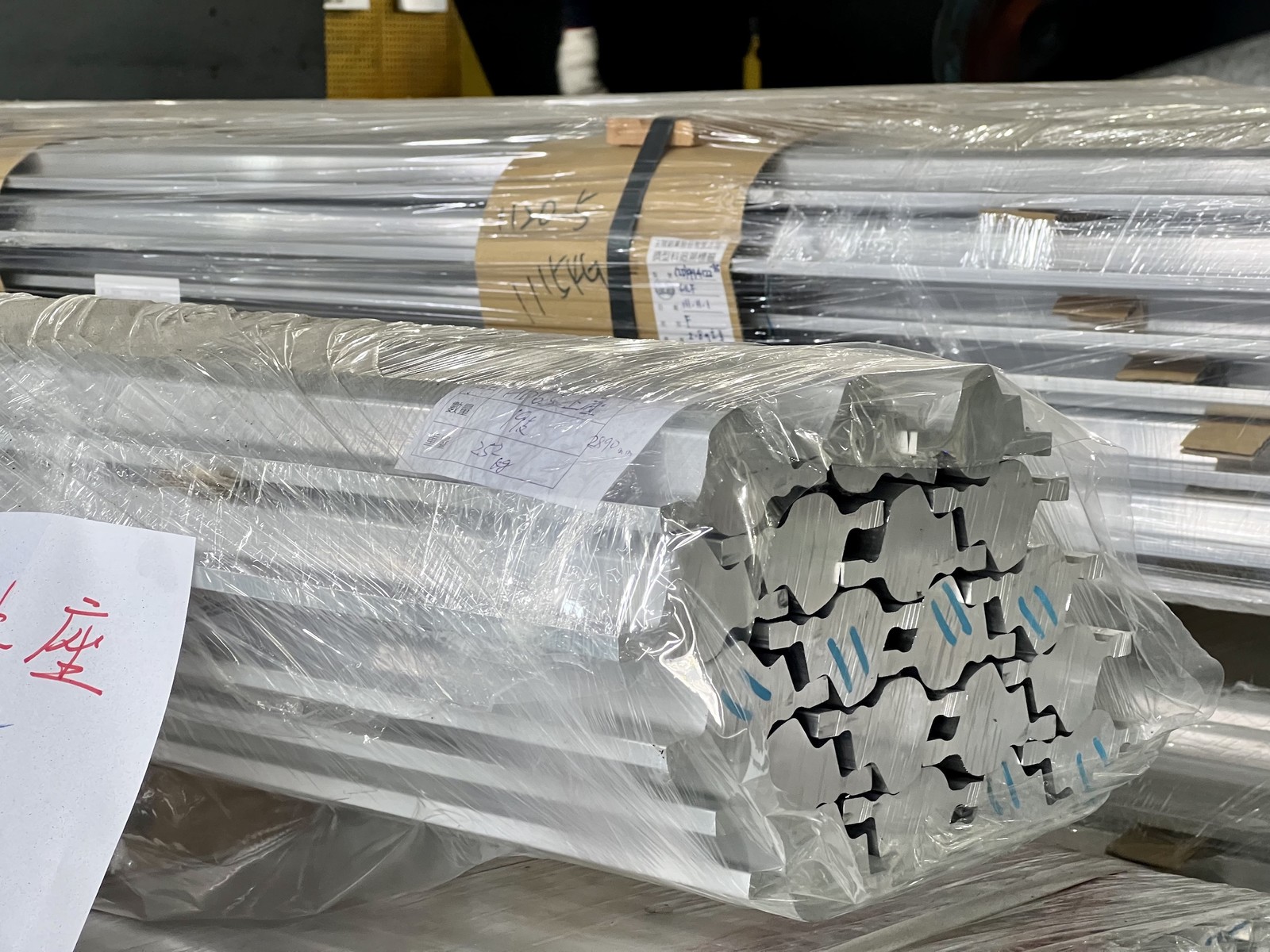
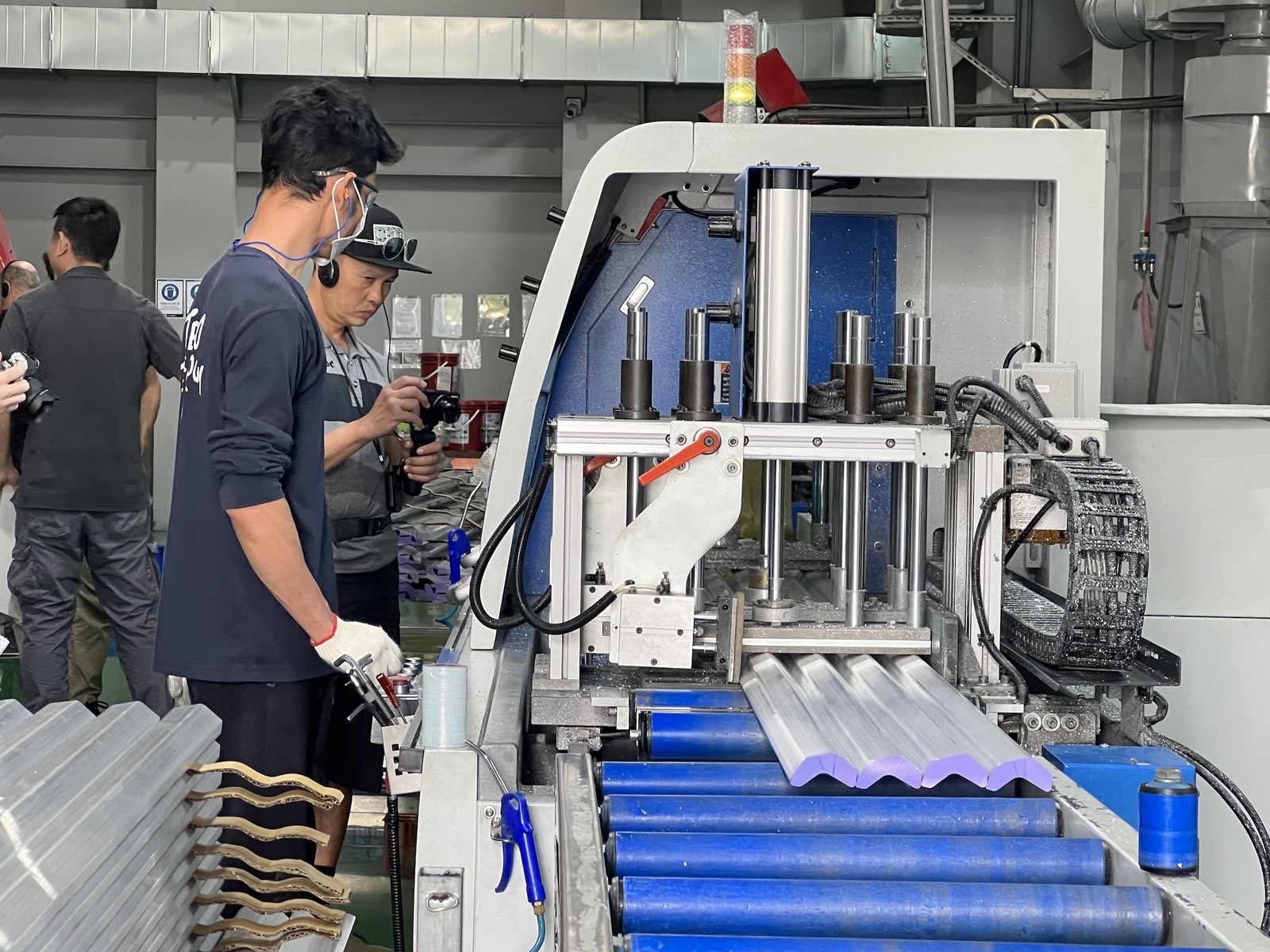
The brake production process begins with raw materials being cut and extruded into an initial piece of workable material. Following the extrusion process, sharp edges are carefully removed, and the material is cleansed.
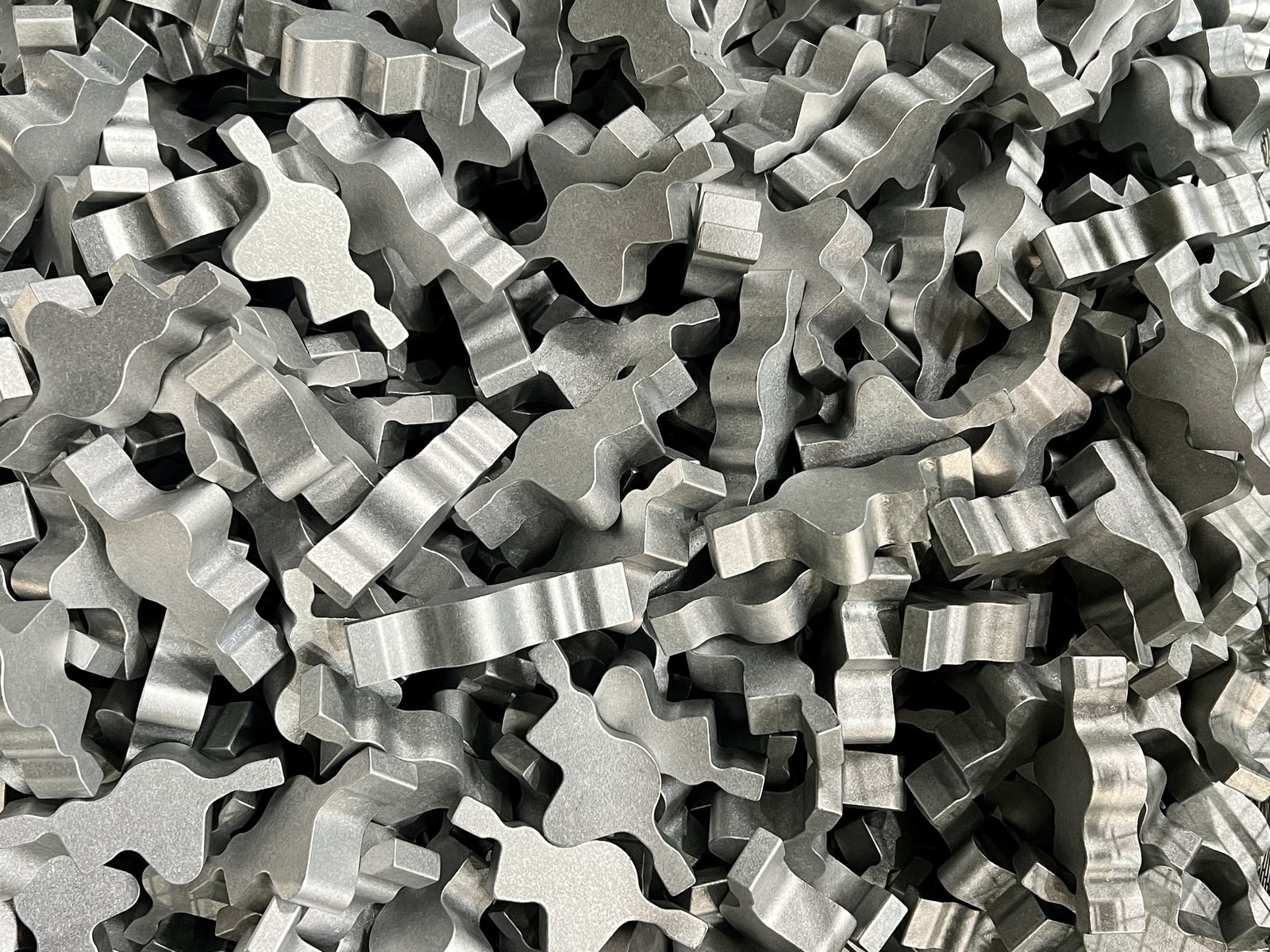
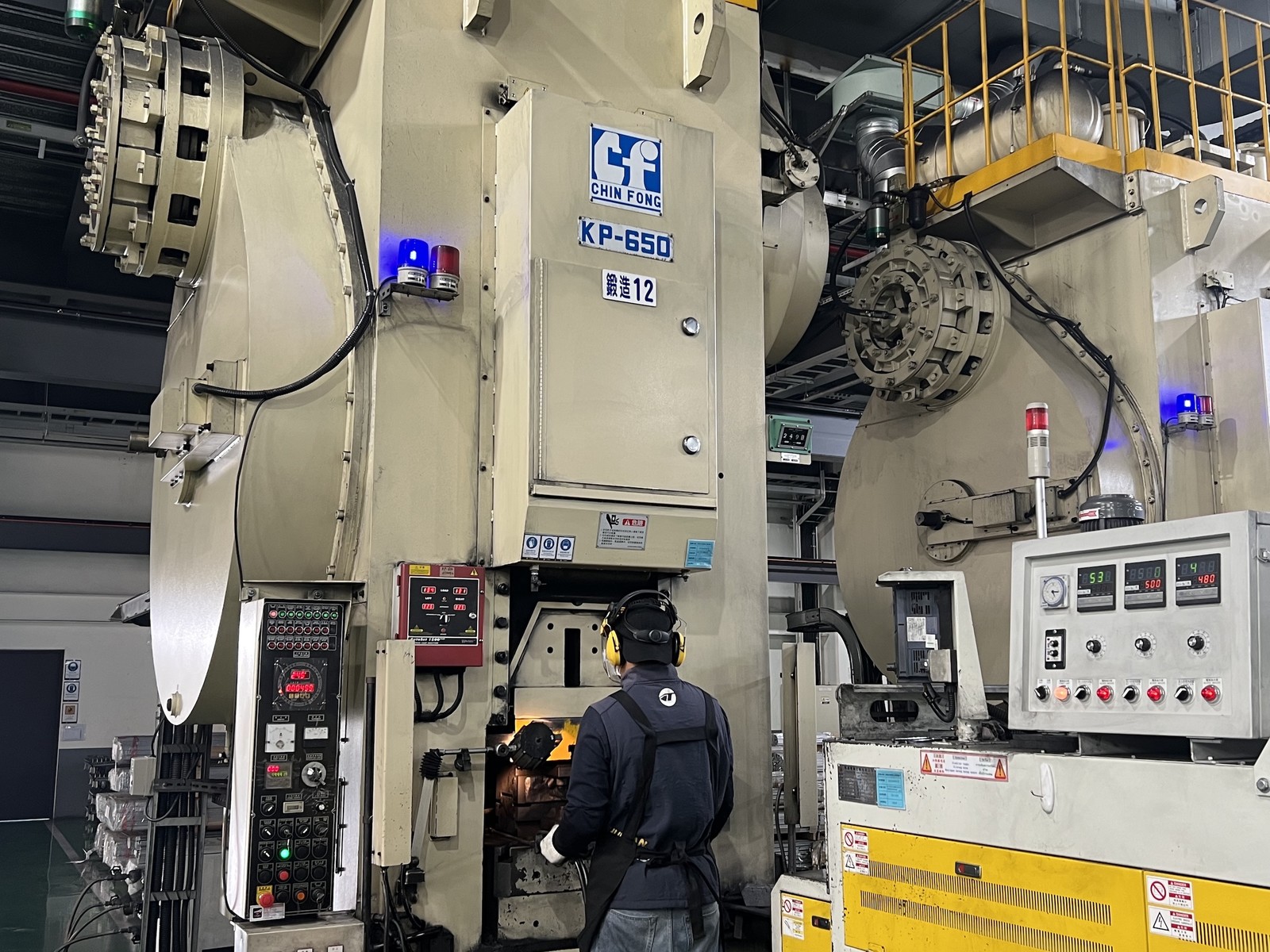
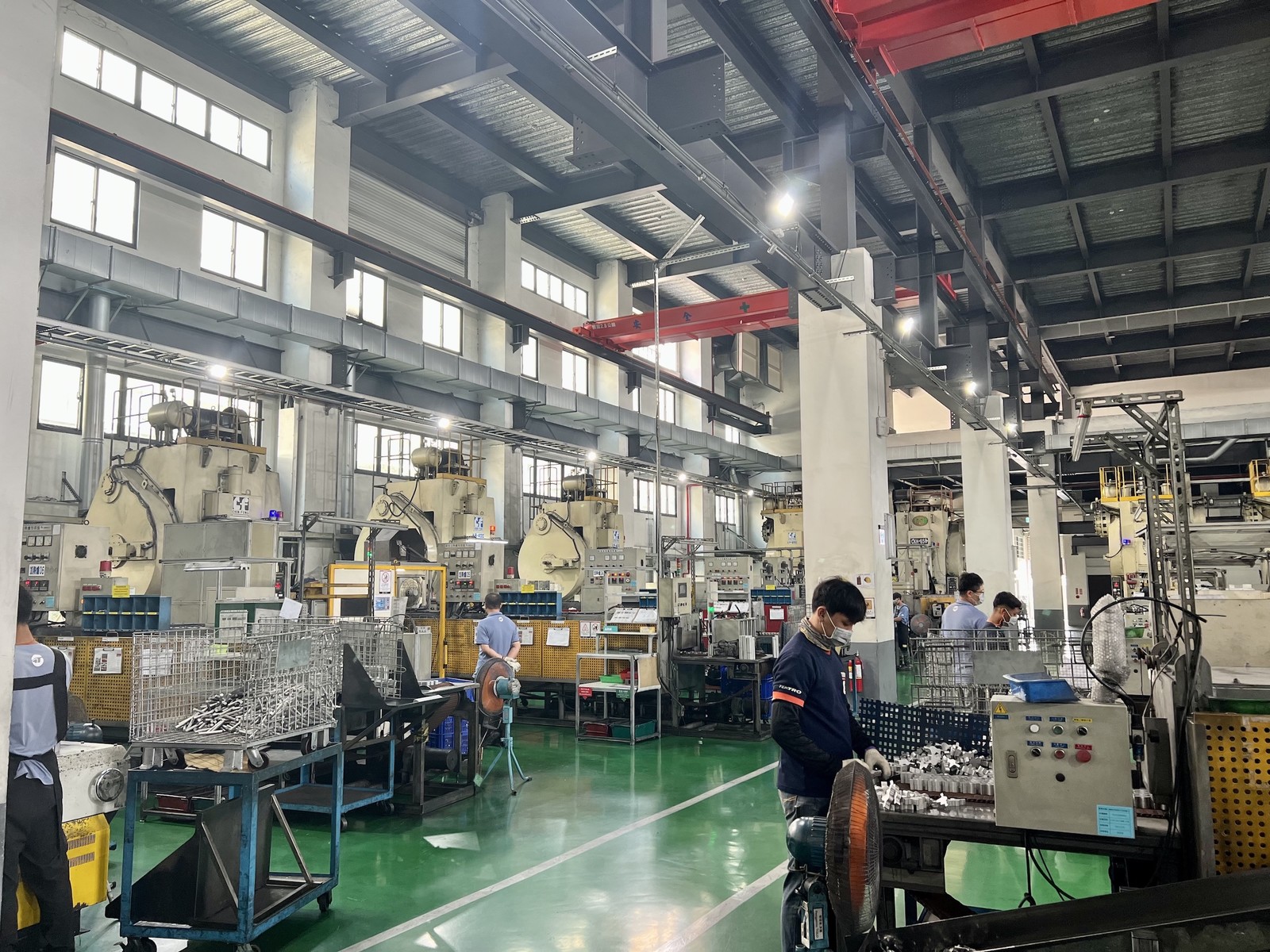
The material then proceeds to the forging floor, where giant presses forge the first familiar shape of what will eventually become a brake component. The forging floor is lined with numerous 400-pound and 650-pound presses.

Currently, most of the forging process — forging the shape and then heat treatment at 300-400 degrees for hardening — involves direct human interaction, but full automation testing is underway in the factory.

Many unique molds are required to produce the brake parts, some of which are manufactured in-house. The molds wear over time, requiring regular quality inspection and maintenance.

This friendly robot is utilized on the factory floor to transport small parts, random items, and the occasional cup of Taiwanese tea, all while humming a happy tune as it passes by.

The factory has an endless variety of custom-designed machinery, including an impressive 180 CNC machines, more than some of Tektro’s CNC vendors. The CNC machines are specifically designed for their purpose and are highly automated — one person can oversee four or five machines simultaneously.

The CNC products include cassettes, with a finished product proudly displayed here by Mr. Chen, one of the founders.
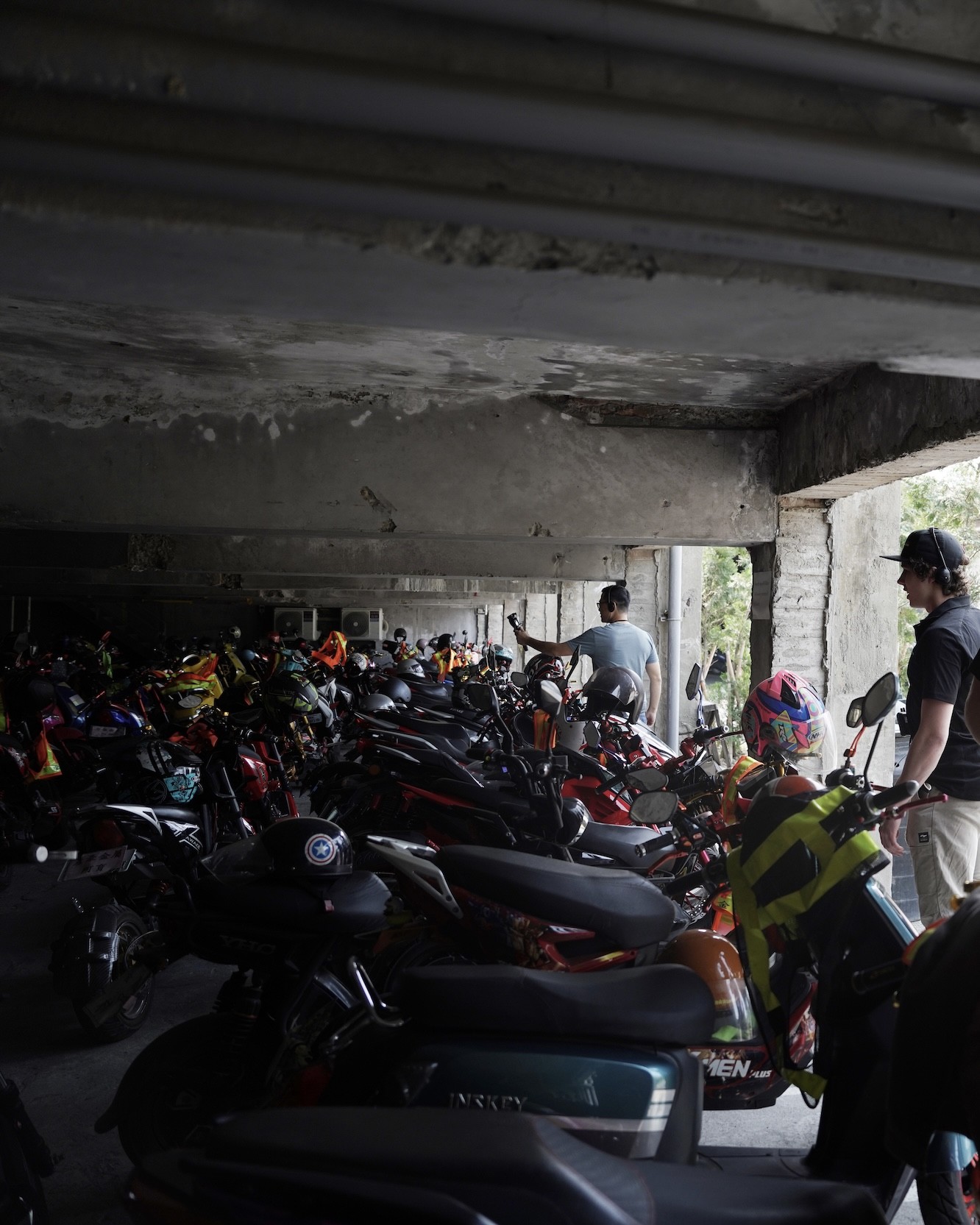
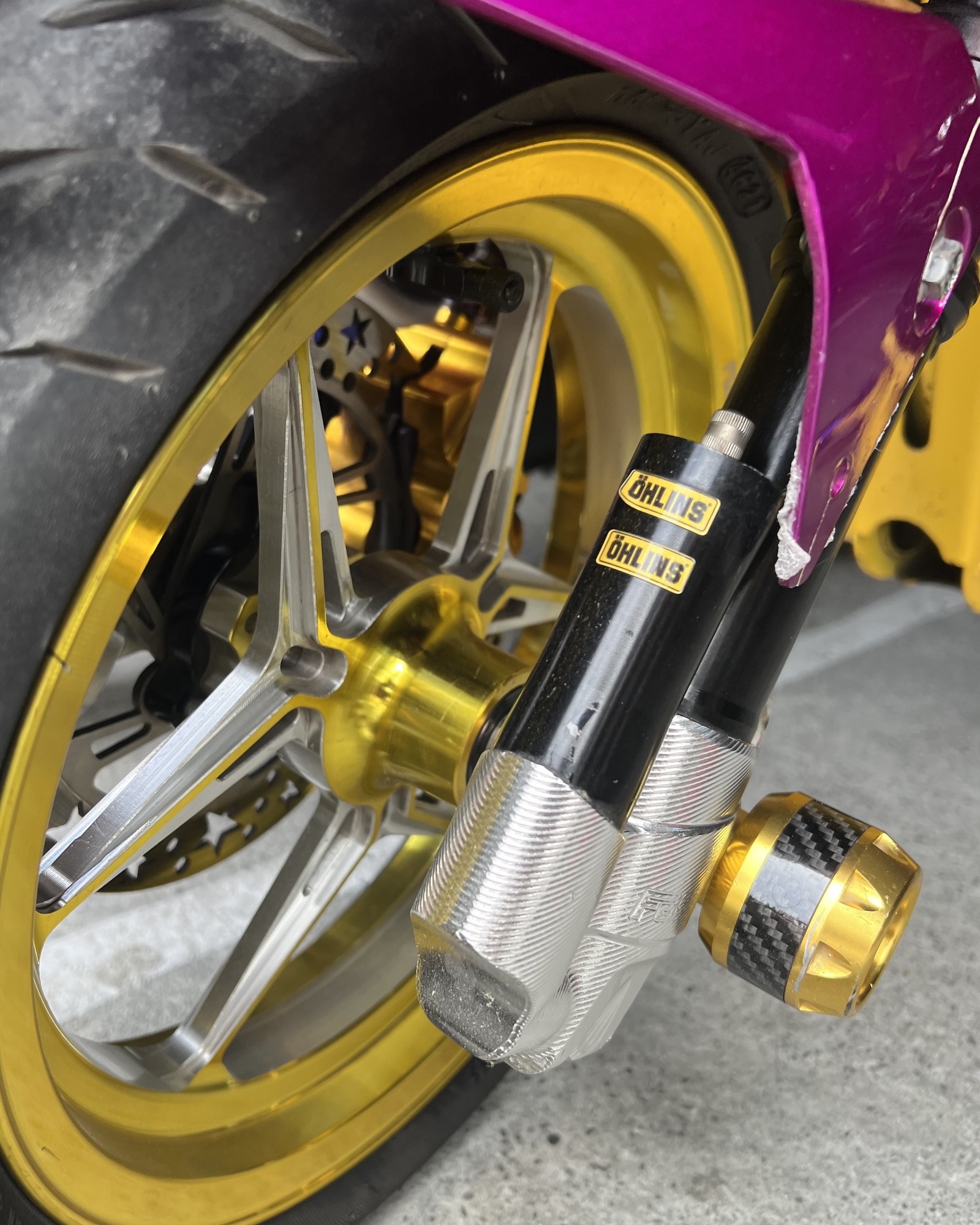
On the way to the CNC building, we spotted a colorfully packed parking garage. No, it wasn’t full of sports cars. 1300 workers contribute to operations at the HQ and factory, many of whom commute to work on scooters. Some of these factory workers come from Thailand to work for Tektro. The Thai workers are exceptionally enthusiastic about their scooters, adding aftermarket modifications and bling, so much so that they have their own parking garage exclusive to their pimped scooters. The “general” scooter population can’t park here.

Nearby the tricked-out scooter garage is a recreation gym with basketball and racquet sports courts for employee use. We heard the gym plays host to some very competitive interdepartmental tournaments. Pink slips, anyone?

Tektro works with numerous Taiwan vendors to develop custom automation solutions, such as washing before painting.

Brake cylinders receive a final prep before entering the paint department.

One of our favorite stops of the tour was the paint booth, where robotic arms were tactfully spraying rows of prepped brake components with a finish coat.

The components autonomously move through the paint booth on a racking system. Water continuously falls in the background as the robot sprays paint, a quality assurance technique that eliminates overspray from remaining in the air.
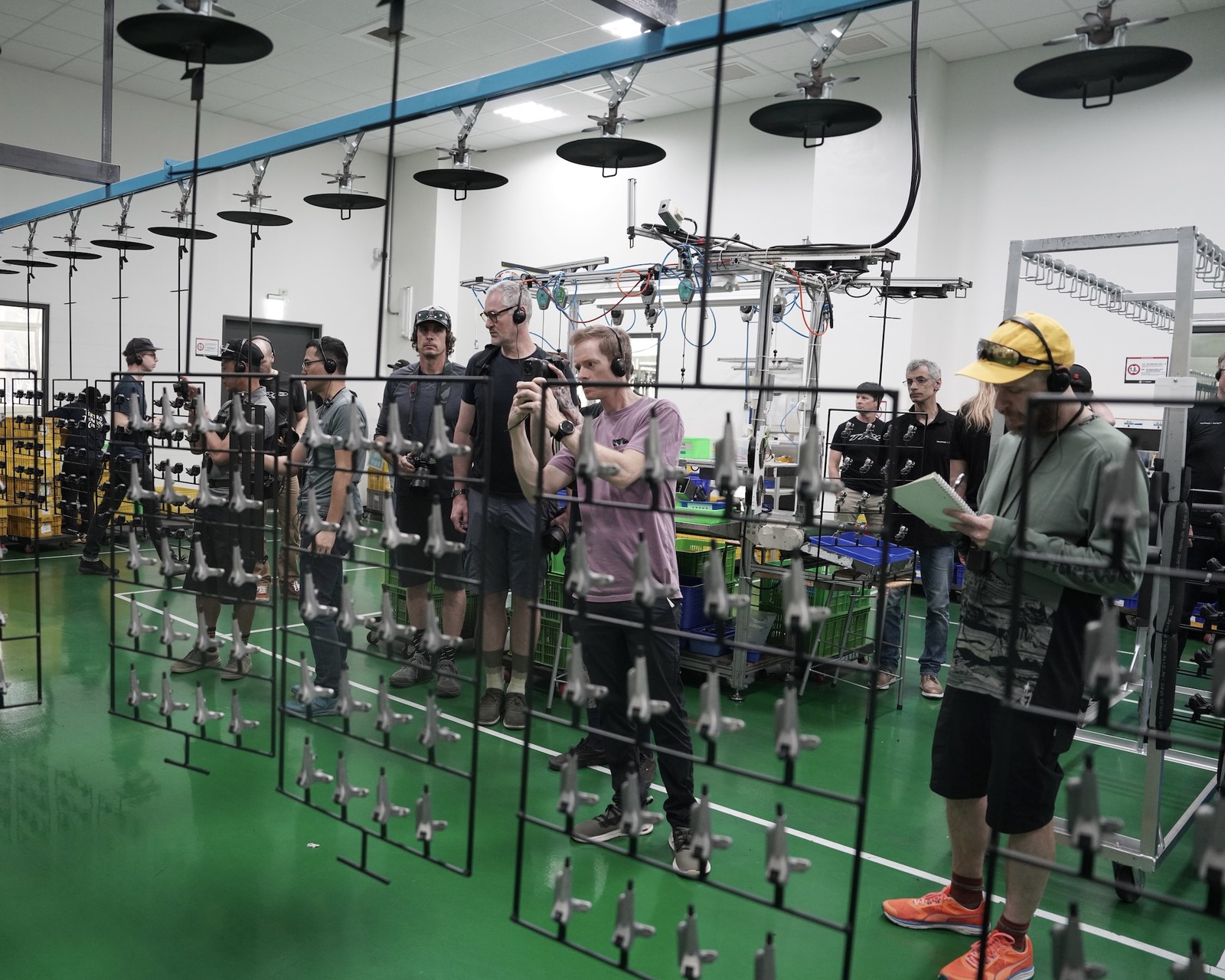
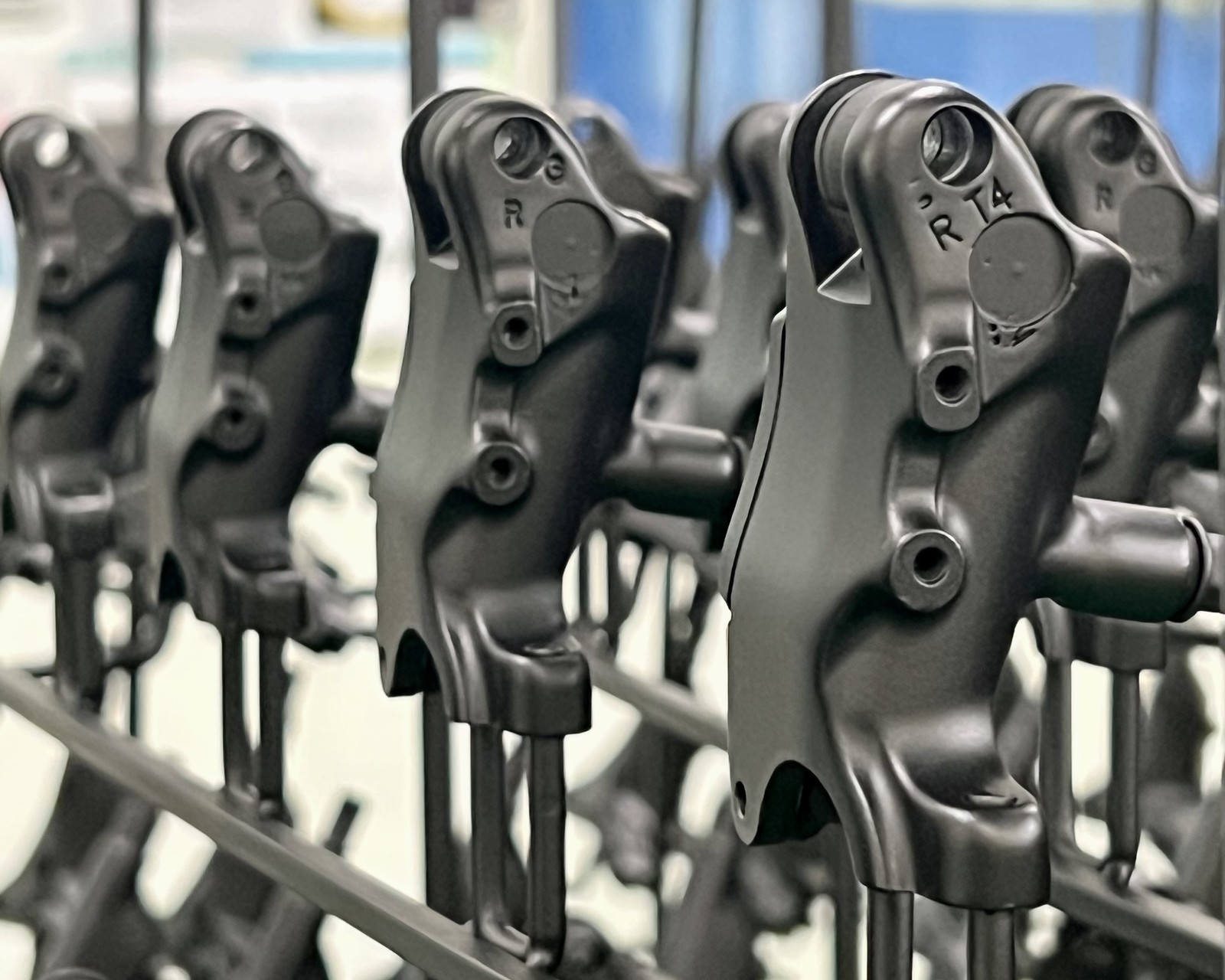
Once the paint has dried, the components will be transferred to the assembly line for the final assembly process.


Hydraulic brake calipers move through an integrated automation line for small-part assembly. O rings, screws, and pistons are meticulously assembled here by automation due to the tolerances required for such small components. For instance, pistons are measured so precisely that those falling outside of the slim threshold are pushed off the line by a burst of air to be recycled.
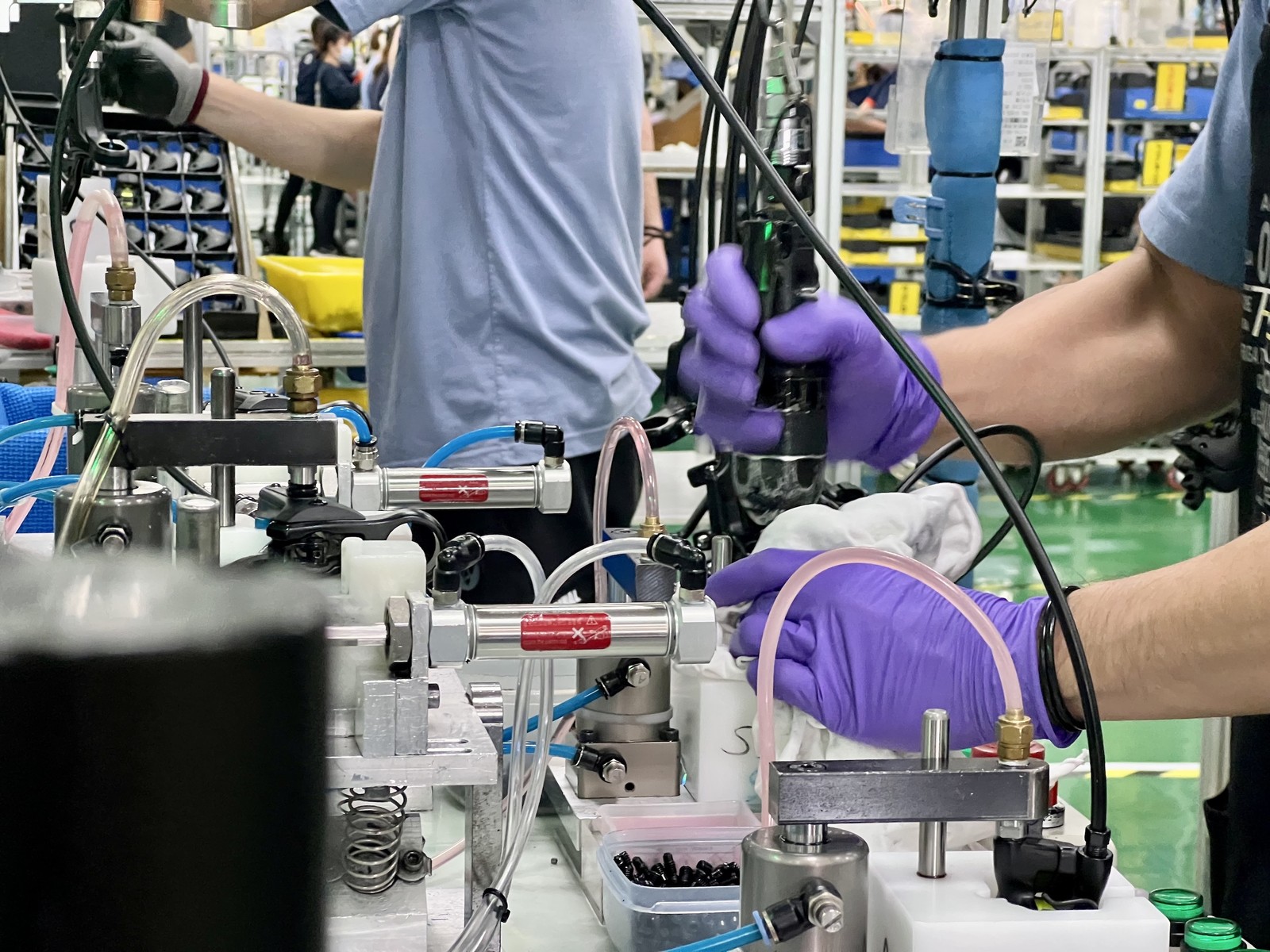
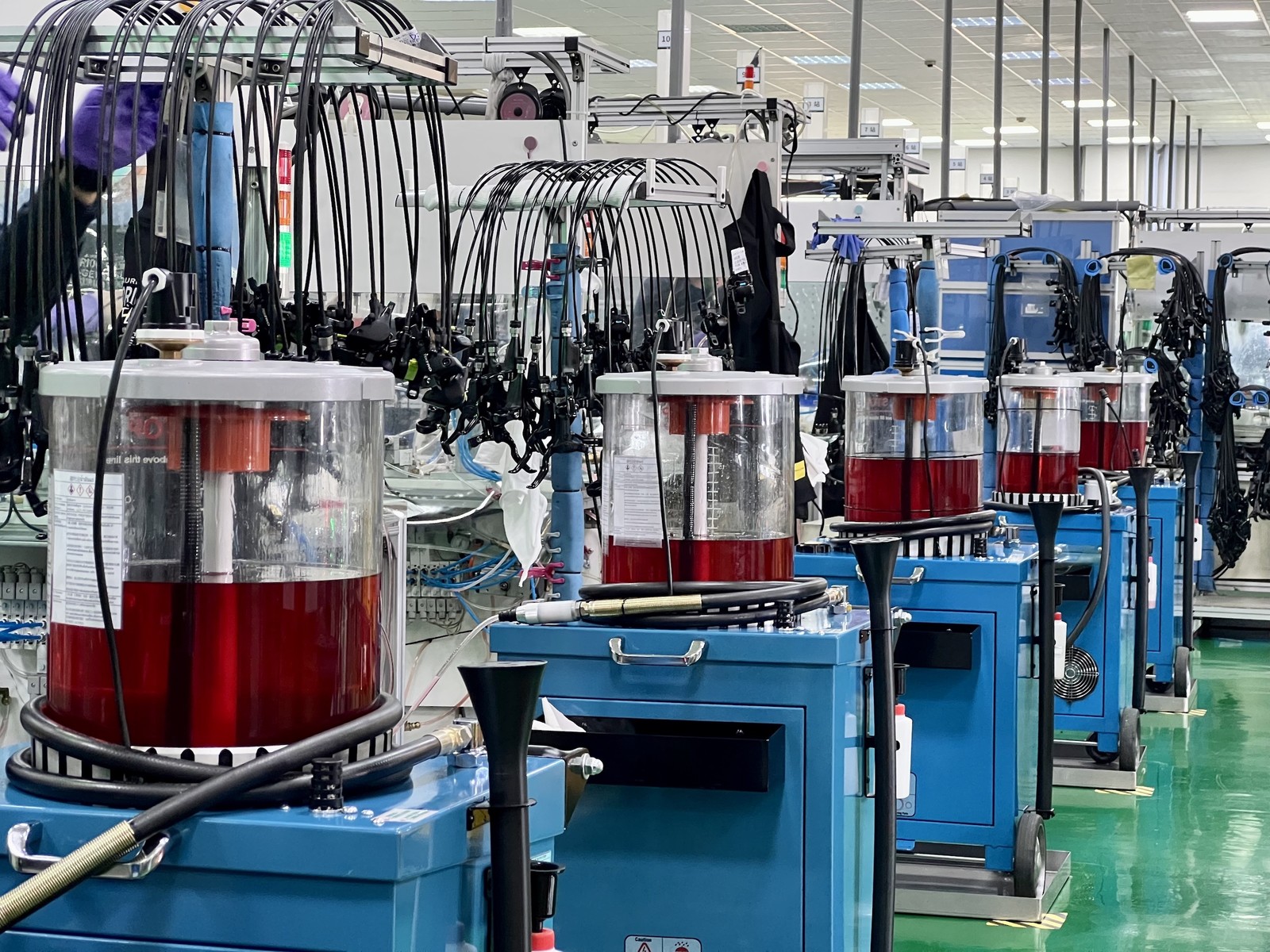
The brakes then move to the lever and hose installation line. Once fully outfitted, the hydraulic systems take a stop at the bleed station. Many of these functions involve manual work, and workers are trained across numerous functions.

After bleeding is complete, each hydraulic brake is then attached to a machine where it is squeezed several hundred times before a final quality assurance check confirms the brake can be packaged and sent to the customer.

This brings us to the final production step at the factory: packaging. The packaging process was recently automated; packing, sealing, and routing the boxes for shipment.

Brake and drivetrain parts wait in the warehouse inventory for final assembly.
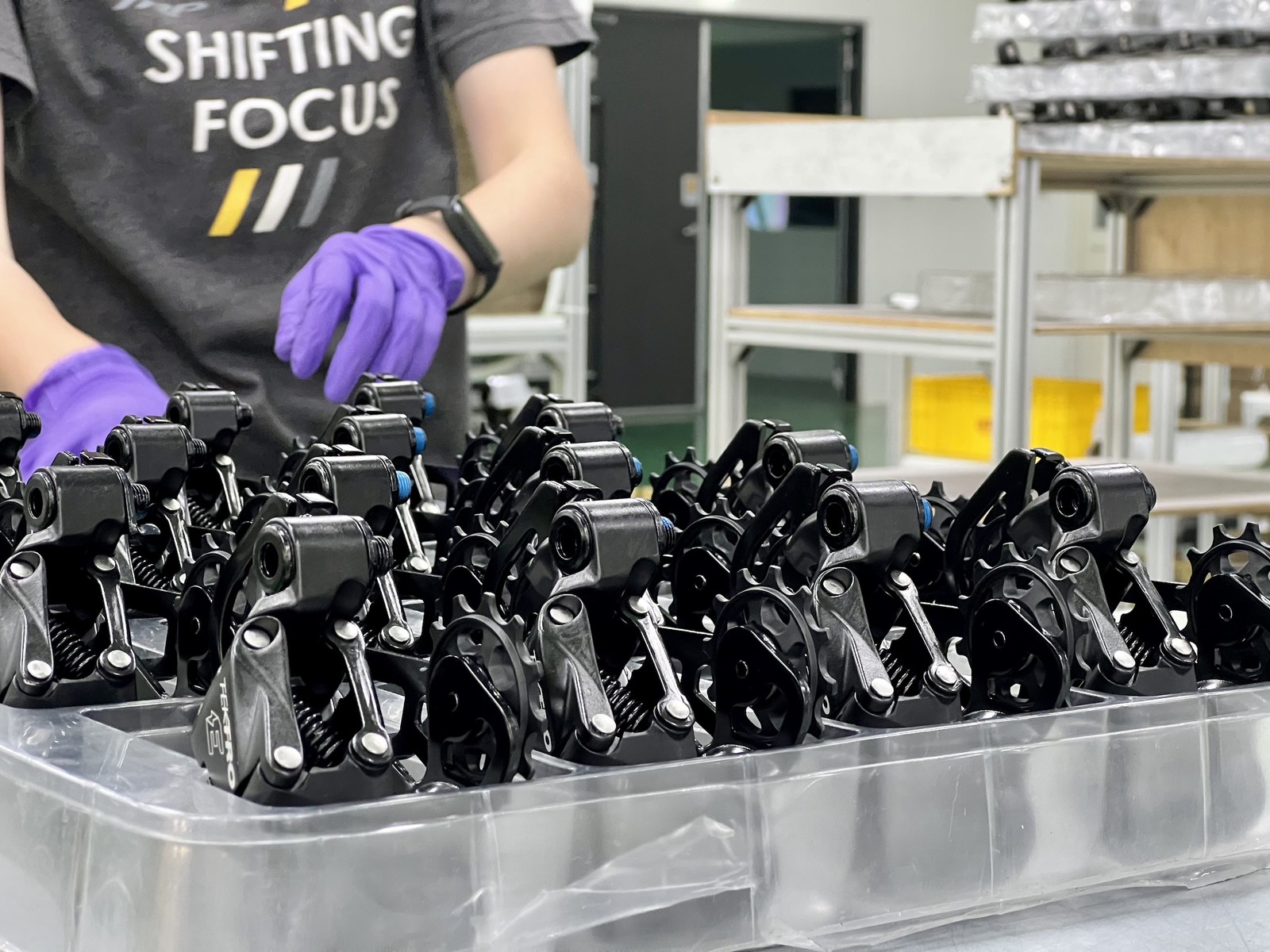
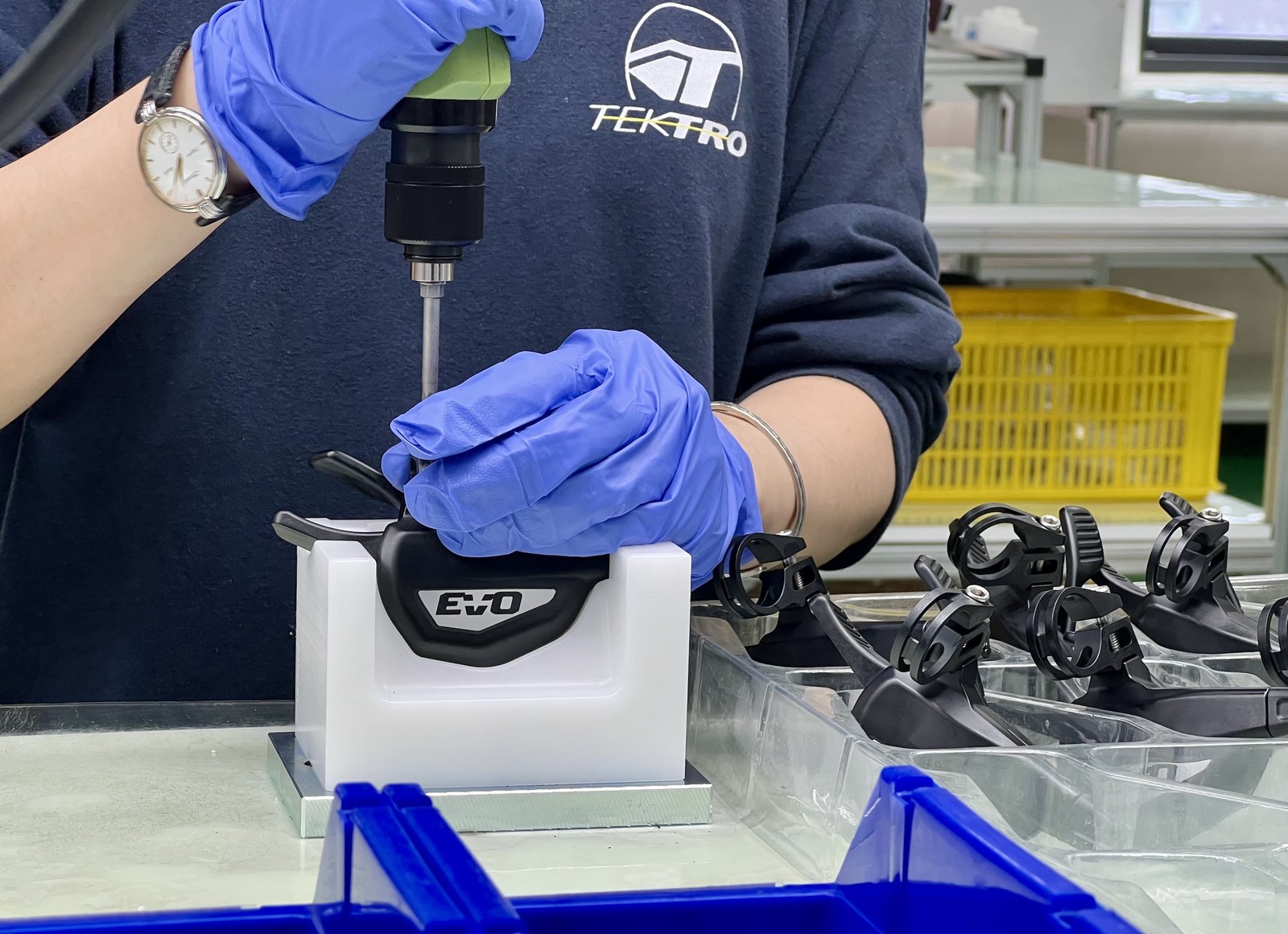
We also visited the drivetrain assembly floor. Much of this process is manual, with technicians delicately assembling the small parts of derailleurs and shifters that will soon make it onto our favorite bikes.

One of the duties of this dark, menacing robot is to ensure guests don’t overstay their welcome. We didn’t hang around to find out the consequences of disobeying. After all, a robot packing some of the most lethal stopping power in the cycling world isn’t something we’re willing to mess with. We know when to grab our Taiwan tea to go! Thanks for joining us on the tour, and thanks to Tektro for the hospitality!







View replies to: Vital Visits Tektro's Taiwan Headquarters and Factory
Comments